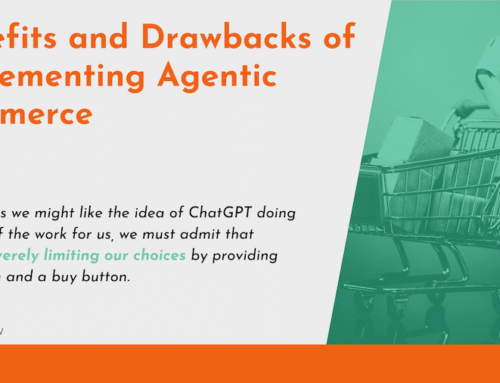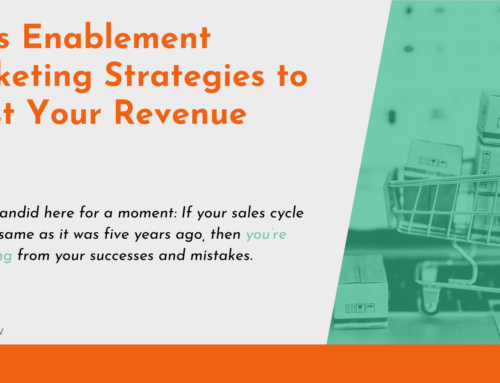
It’s right around the corner; 2023 feels like it could be a bright, shiny new year for us, doesn’t it? We’ll leave the pandemic behind for good and embrace all the possibilities the future holds. Maybe everything will go back to “normal,” or maybe we’ll discover that buyer behaviors were permanently changed. The recession we’ve entered could continue, or we could enter a new era of financial stability.
It’s a lot to consider, and that means the “same old” marketing from 2019 and the new tactics and strategies formed in 2021 until now—well, we can’t exactly rely on any of it. At least not as of right now, can we?
Looking forward, there are a few strategies that CMOs and other marketing leaders will certainly focus on. These are some of those “can’t lose” plans that will be important for your bottom line whichever way the wind blows with regards to buyer behavior. Let’s take a look at some of the strategies you can expect to see CMOs put into place in the coming year.
Preparing for the Recession
We’ve entered a financial downturn and many experts believe it will continue through next year. Optimism is crucial, of course, but so is being prepared. Strong CMOs have already started preparing for harder times. Including strategies for maintaining and growing your current customer base is necessary for survival.
This is an era of cutting back on the “nice to haves” and doubling down on the critical tools at your disposal. You can’t afford to cut any of your customer retention tools, whether those are social listening tools, review prompts, and, above all, happy customer service employees.
You shouldn’t attempt to get by without your smart marketing automation tools, but you may be able to cut back some of the features. Any smart marketing tools that help you manage your contact database, track buyer behaviors, and personalize the customer’s buying experience is worth the price you’ll pay.
Stronger Alignment Between Marketing and Sales
For years—even decades—companies have done one of two things: they either completely separate the marketing and sales departments, or they expect one department to manage both. Neither of these configurations are beneficial to the growth of your bottom line. Marketers market; sales people sell. Even the psychologies behind each are different, but that doesn’t mean the two departments can’t work together to increase sales.
The important thing to note, particularly for sales departments that expect the marketing department to feed them leads with nothing in return, is that the relationship between sales and marketing should be a two-way street. Through smart marketing, the marketing department can deliver highly qualified leads. In return, the sales department should report back details about customers that help marketers hone buyer personas to make sure they hit the target every time.
So, Sales. Marketing. You guys should all get together for drinks or coffee sometime. Figure out how you can best work together, because that’s the direction we’re headed in 2023.
Purpose-Driven Branding Strategies
With Millennials controlling $2.5 trillion and Generation Z $140 billion, they really have the power now to make or break a brand. Smart marketing leaders understand this, and that’s why they also understand that branding strategies need to revolve around a true purpose. That’s because Millennials and Generation Z are more likely to buy from brands that have similar social and political beliefs. In fact, 68% of Millennials and 73% of Gen Z are willing to pay more for a brand that has beliefs that match their own.
Developing a purpose-driven strategy isn’t hard, but it must be authentic. These buyers can tell if a brand is disingenuous from miles away. In most cases, the purpose may already be baked into your brand identity—it just hasn’t been brought to the forefront of your brand messaging. In other cases, the purpose for your brand may not be stated, but could be easy to determine. For instance, children’s brands getting on board with any activities that protect children would be a no-brainer. Clothing brands that ensure warm apparel for the less fortunate during winter months, food brands providing food for the less fortunate—the possibilities are endless and, in some cases, obvious.
Focus on Team Engagement
The “Great Resignation” may have started in 2021, but it continued strong this year. Those who didn’t turn in their two weeks’ notice may have practiced “quiet quitting,” where they simply did the minimal amount to get by. The common denominator with these companies that experienced resignations and “quiet quitting” en masse was a work environment that may have been considered toxic—at best.
When examining why people left their jobs—or simply stopped trying to excel—63% said the pay was too low, and another 63% said there was no opportunity for advancement. Simply put, 2023 is the year to focus on making your marketing team feel appreciated. Evaluate the pay scale, offer opportunities for continuing education and advancement, provide flexibility in their work schedules and locations—WFH is here to stay—and focus on building rapport with your staff.
Happy employees are more creative, more productive, and more likely to make your customers happy. If there’s a no-brainer in this list, it’s this one.
Relationships, Not Revenue
A laser focus on the bottom line may have led millions of Americans to quit their jobs in the last couple of years, but what did it do to revenue? If you think it helped grow revenue, you’d be wrong. Think about the previous two points in this article, and you’ll understand. Buyers are looking for brands they can connect with. If your brand doesn’t provide that, then your bottom line is toast.
By building purpose-driven branding strategies and empowering your employees to make your buyers happy, you’re most of the way there. The rest relies on providing amazing customer service to your buyers. That doesn’t just mean fixing problems when things go wrong. You have to be actively engaged with them at all times, building relationships with your buyers the way you might with your neighbors.
You want these buyers to trust you enough to give you more information about themselves—goodbye big data, right?—because that first-person data will help you create more personalized and relevant content. The more relevant the content, the happier your buyers will be. And when they’re happy, they’ll give up even more information to keep those personalized experiences coming.
That doesn’t mean you have to keep all your information on Post-Its around your desk, either. Good marketing automation software will help you do most of the job. The rest—the part where you really do actually care about your buyers and not just the revenue—is up to you.
To enter 2023 with marketing strategies at the ready, you may need a bit of a boost from a marketing leader. If that’s the case, we’re here to help. A fractional CMO can help you create and execute new strategies at a fraction of the cost of a full-time CMO, and that could be the exact leg-up you need for your 2023 success.





